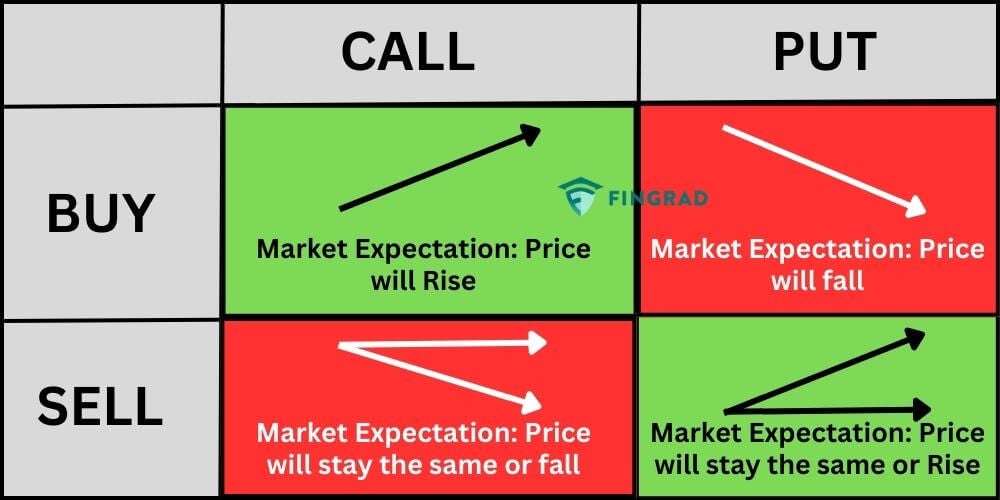In the realm of finance, the enigmatic world of options trading beckons investors seeking both opportunity and risk. It is a realm where knowledge and strategy reign supreme, where the allure of profit dances alongside the potential for setbacks. For those who dare to venture into this arena, the rewards can be substantial, but the path demands diligence, discipline, and a deep understanding of the intricacies involved. Embark on this journey with us as we unveil the secrets of options trading as a business, empowering you to navigate its complexities and harness its boundless potential.

Image: tradebrains.in
At its core, options trading involves the purchase or sale of contracts that grant the holder the right (but not the obligation) to buy or sell an underlying asset, such as stocks, bonds, or currencies, at a predetermined price on or before a specific date. These contracts, known as options, derive their value from the potential price fluctuations of the underlying asset. By understanding the complex interplay of factors that influence asset prices, astute traders can craft profitable strategies that exploit favorable market conditions.
Delving into the Lexicon of Options Trading: A Guide to Essential Concepts
Options trading, like any specialized field, possesses its own lexicon of terms that may seem daunting at first. However, grasping these fundamental concepts will serve as a solid foundation for your journey into this realm. Options are classified into two primary types: calls and puts.
- **Call options** convey the right to buy an underlying asset at a predetermined price, known as the strike price, on or before a specified expiration date. These options are typically employed when traders anticipate an increase in the asset’s value.
- **Put options**, on the other hand, grant the right to sell an underlying asset at the strike price on or before the expiration date. Put options are utilized when traders foresee a decline in the asset’s value.
In addition to the type of option, traders must also consider two crucial variables: the strike price and the expiration date. The strike price represents the price at which the holder can exercise the option to buy (for calls) or sell (for puts). The expiration date, as its name suggests, marks the final day on which the option can be exercised. Options can be exercised at any point up until the expiration date, providing flexibility for traders to adapt to evolving market conditions.
Strategies for Success: Unlocking the Potential of Options Trading
Armed with a grasp of options trading’s fundamental concepts, traders can now embark on crafting strategies that align with their investment goals and risk tolerance. Numerous approaches exist, each tailored to specific market conditions and risk profiles. Let us shed light on some of the most prevalent options trading strategies:
- **Covered Calls:** This strategy involves selling (or writing) call options while owning the underlying asset. It is employed when traders anticipate a sideways or slightly bullish market, aiming to generate income from the premium received for selling the options while limiting potential losses to the difference between the strike price and the asset’s current price.
- **Protective Puts:** This strategy entails buying put options to protect against potential losses on a held asset. It acts as an insurance policy against a decline in the asset’s value, with the premium paid for the put option serving as the cost of protection.
- **Iron Condors:** Iron condors are more complex strategies that combine both call and put options with different strike prices and expiration dates. They are designed to profit from low volatility and a narrow trading range, earning income from the premium received while managing risk by limiting potential losses to the difference between the strike prices.
These strategies represent just a fraction of the myriad options trading approaches available. The choice of strategy ultimately hinges on the trader’s individual risk tolerance, market outlook, and investment objectives.
Expert Insights: Navigating the Market with Wisdom
To further enhance your understanding, let us tap into the wisdom of seasoned options traders who have weathered the storms and emerged triumphant. Their insights serve as invaluable guideposts along this challenging yet potentially rewarding path:
- **”Options trading is not a get-rich-quick scheme,” cautions veteran trader John Carter. “It requires a disciplined approach, a thorough understanding of market dynamics, and a willingness to accept occasional losses.”**
- **”Trade within your means,” advises renowned options strategist Anne-Marie Baiynd. “Never risk more than you can afford to lose, and always consider the potential downside before entering a trade.”**
- **”Stay informed and adaptable,” emphasizes market analyst Jim Berg. “Options trading is constantly evolving, so it’s crucial to keep abreast of market trends and adjust your strategies accordingly.”**
These expert insights serve as a testament to the challenges and opportunities inherent in options trading. By embracing these principles, traders can increase their chances of success while mitigating potential risks.

Image: rmoneyindia.com
The Path Forward: Embracing Options Trading as a Business
Options trading can indeed serve as a viable business endeavor for those who possess the necessary knowledge, skills, and unwavering dedication. By treating options trading as a serious business, aspiring traders can establish a consistent and profitable stream of income. Here are some essential steps to consider:
- **Develop a comprehensive understanding of options trading. This involves studying the concepts, strategies, and risks involved. Attend workshops, read books, and connect with experienced traders to deepen your knowledge base.**
- **Create a tailored trading plan. Define your investment goals, risk tolerance, and preferred trading strategies. This plan will serve as your roadmap for navigating the complexities of the market.**
- **Manage your risk prudently. Determine how much capital you are willing to risk on each trade and stick to those limits. Never invest more than you can afford to lose.**
- **Control your emotions. Trading can be an emotionally charged endeavor, but it is crucial to maintain discipline and avoid letting emotions cloud your judgment.**
- **Monitor the market continuously. Stay abreast of economic developments, news events, and market trends that could impact the performance of your trades.**
- **Learn from your mistakes. Everyone makes mistakes when trading. The key is to analyze your mistakes, learn from them, and avoid repeating them in the future.**
By adhering to these principles and embracing a mindset of continuous learning and improvement, you can establish a solid foundation for success in options trading as a business.
Options Trading As A Business
Conclusion: The Path to Profitability and Fulfillment
Options trading presents a unique opportunity for those seeking a lucrative and potentially fulfilling business endeavor. By mastering the intricacies of the market, developing sound strategies, and managing risk effectively, aspiring traders can harness the power of options to achieve financial success. Remember, the journey to profitability in options trading is paved with challenges, but with passion, perseverance, and a commitment to continuous learning, you can navigate the complexities of the market and reach your business goals. Embrace the opportunities that options trading offers, and embark on a path of financial freedom and personal growth.






